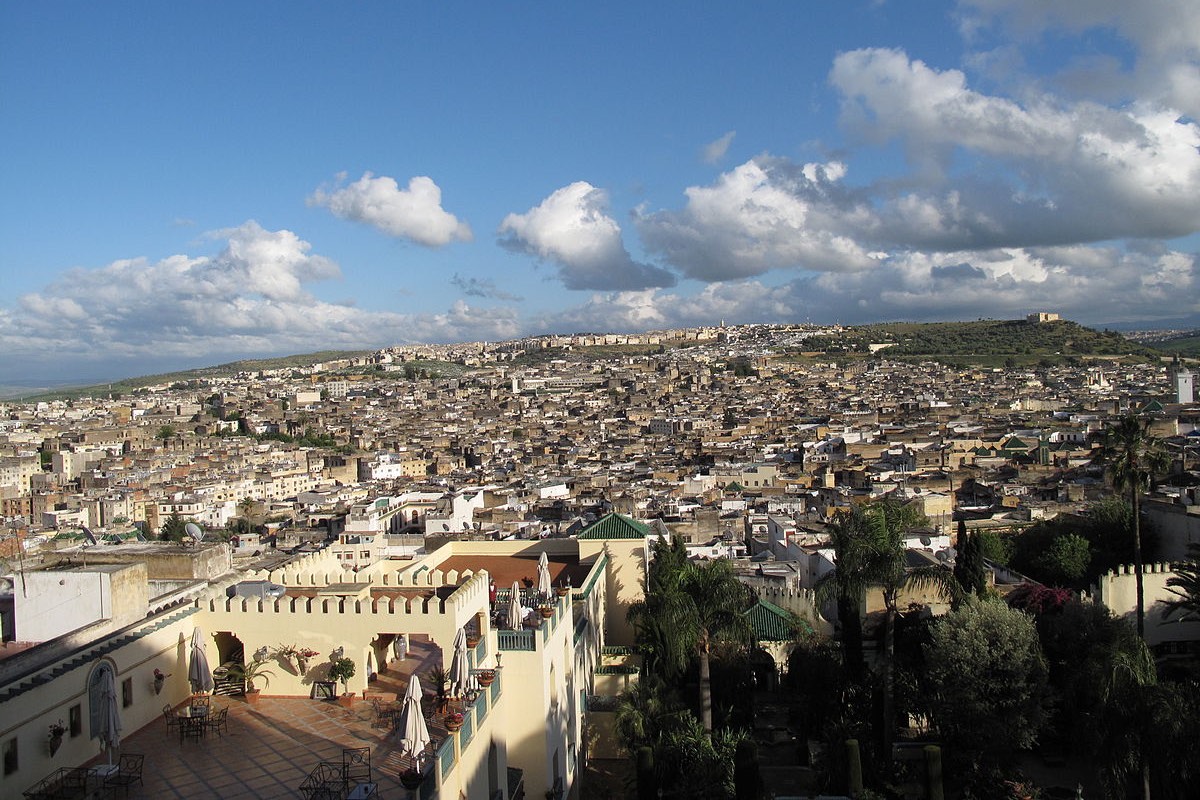Location Research In The Moroccan City Of Fez

"Vue medina fes" by Zimaal - Own work. Licensed under CC BY-SA 3.0 via Wikimedia Commons
It took a trip to Fez, an ancient city in Morocco, to make me realise what it must have smelt like in pre-industrial Britain. York has its fair share of urban pongs, but, for the sake of the tourists swirling round the museum on its snazzy train. they are kept at manageable levels.
The Shambles and Tannery Row are familiar street names if you live in an older UK town. They’re probably like any others in the area – just streets. They were more than that once, however: a shambles isn’t just a fair description of a teenager’s bedroom but the street where animals were slaughtered. The tannery would be where the animals’ skins were cured for use as leather, vellum or whatever.
I’d not been intimately connected with either process until my recent holiday. Fez is part bustling modern city and part higgledy-piggledy medieval town, with streets so narrow that the main means of transport is the horse or donkey, or a two-wheeled handcart. We were there in the run-up to Eid, when it is incumbent on every family to sacrifice (and then eat) a sheep.
Where there are animals, there is dung. In an enclosed environment – some of the streets of the old medina are little more than a metre wide – the smell is rich. The animals themselves smell. The people don’t have access to the endless flow of water from the mains, with deep sewers taking away the effluent. There are smells that come and go – cartloads of fleeces still warm from the sheep squeeze past you, not just fluffy mounds of wool but fluffy mounds of wool with the skin attached. Actually, not so fluffy: the wool’s not been washed and there’s an olfactory overlay of rancid lanolin. Clearly their previous owners have paid a last visit to the shambles.
There are other smells. Suddenly the air gleams with citrus smells, or with garlic. Turmeric dances with cumin, and coriander with mint. Someone is baking fresh bread. Over there is coffee.
Soon we find ourselves in a shop entirely devoted to leather goods. We are greeted by a young woman handing out sprigs of lemon balm. One for each tourist. We stare, puzzled. Shyly she shows us how to rub the leaves directly under our noses to give off a sweet smell. We scoff. Who wants a sweet smell when you could bathe in the rich scent of new leather bags and jackets so soft you could wrap a baby in them? The answer is, every last one of us. Even the manliest Antony of a man. Because we are to go up on to the roof to overlook the tannery.
The Moroccan tanning process involves pigeon droppings, rich with ammonia. The interaction between the no longer fresh fleeces and the guano produces an odour that had several jammed in the narrow doorway, gagging, as they tried to escape. The hardier ones pretend that cameras provide an effective barrier. Wrong. Somehow the desire to buy leather garments wanes sharply – they all seem to have a ghostly residue of that appalling stench. Sprigs of mint? We need fully-fledged nosegays or pomanders.
Most of us opt for chicken tagine for lunch.
There are still an awful lot of sheep still on the hoof. Everywhere you look there is at least one animal in transit. Most go in the back of elderly pickups. We see one tethered to a shop railing, Wild West-style, awaiting a lift. Others travel on bikes, sitting, as it were, on the rider’s lap. Others travelled the same way on motorbikes. My favourite took me straight to the Bible and a Sunday school image of the Good Shepherd carrying a lost sheep on his shoulders. Except this sheep wasn’t lost. It was heading to a party.
In the West, killing is done in decently concealed abattoirs, or I suspect there’d be far more vegetarians. In Morocco, on Eid itself, we saw – well, I never saw the raised knife of the halal killing. I did see knives being honed, however, and we all knew what they were for. We saw gutters running with sickly-sweet blood, and more heaps of bloody fleece by the roadside.
This is Fez today – but basically anywhere in the UK before we got around to sewers, running water and industrial death for our food.